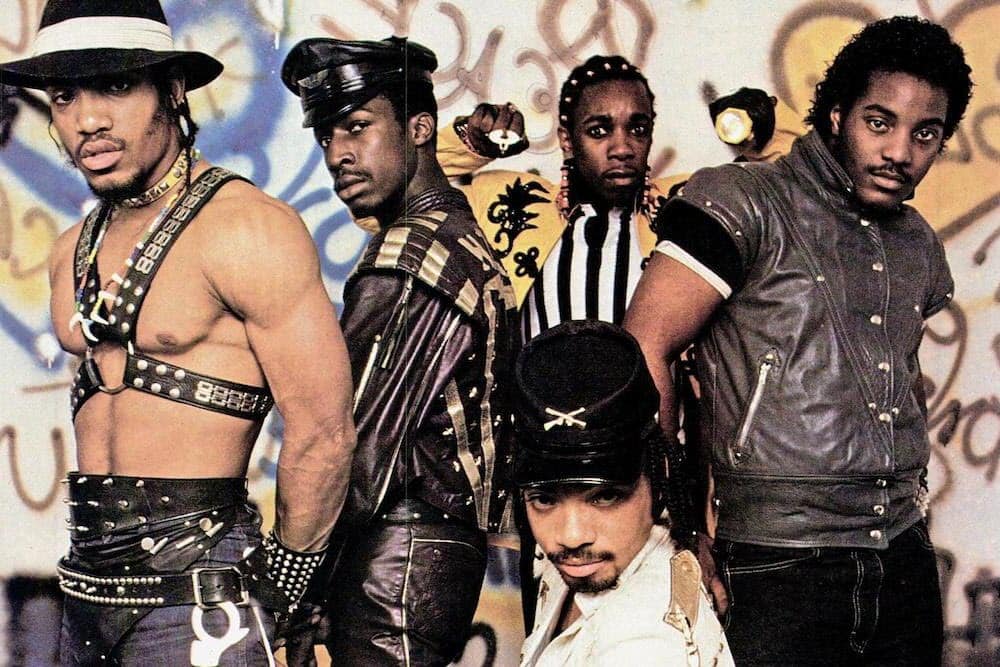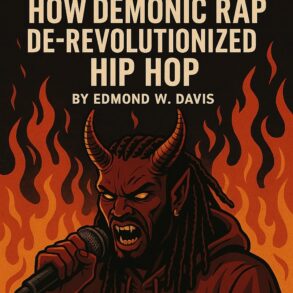In the vibrant and ever-evolving landscape of hip-hop, pinpointing a single “best” song is a subjective challenge, given the genre’s diversity and the multitude of impactful tracks. One standout, however, is Nas’s “Illmatic,” often hailed as a pinnacle of hip-hop artistry. Released in 1994, the album encapsulates the essence of East Coast rap and showcases Nas’s lyrical prowess.
The opening track, “N.Y. State of Mind,” serves as a microcosm of the album’s brilliance. Produced by DJ Premier, the song immerses listeners in the gritty realities of Nas’s upbringing in Queensbridge, New York. His intricate storytelling, vivid imagery, and rhythmic flow paint a vivid portrait of urban life, capturing the struggles and aspirations of a young artist navigating a turbulent environment.
“Illmatic” and “N.Y. State of Mind” specifically epitomize the genre’s ability to be a vessel for social commentary and personal reflection. Nas’s lyrical dexterity, combined with the seamless production, has solidified the track’s status as a quintessential hip-hop masterpiece, influencing generations of artists and contributing to the genre’s rich legacy. The cultural impact and enduring relevance of “N.Y. State of Mind” make it a cornerstone in the conversation about the best hip-hop songs of all time.
1. The Message by Grandmaster Flash and the Furious Five
“The Message” by Grandmaster Flash and the Furious Five is a groundbreaking hip-hop track that stands as a seminal work in the genre’s history. Released in 1982, the song marked a departure from the party-centric themes of early hip-hop, introducing a socially conscious narrative that delves into the struggles and challenges of urban life.
Grandmaster Flash and the Furious Five, pioneers of hip-hop, delivered a raw and unfiltered portrayal of the realities faced by marginalized communities. The lyrics address issues such as poverty, violence, and systemic inequality. The iconic refrain, “It’s like a jungle sometimes, it makes me wonder how I keep from going under,” captures the sense of desperation and resilience prevalent in inner-city environments.
Musically, “The Message” features a distinctive electronic beat and a memorable bassline, complementing the gravity of the lyrics. The song’s impact extended beyond the realm of hip-hop, influencing subsequent generations of artists and establishing a template for socially conscious rap.
“The Message” is often celebrated for its authenticity and its role in elevating hip-hop to a platform for societal commentary. The track remains a powerful testament to the genre’s potential for cultural critique and reflection, earning its place as a classic in the hip-hop canon.
2. Rapper’s Delight by The Sugarhill Gang
“Rapper’s Delight” by The Sugarhill Gang is a landmark hip-hop song that played a pivotal role in introducing rap music to a mainstream audience. Released in 1979, the track is widely considered one of the earliest and most influential rap recordings.
Clocking in at over 14 minutes in its full version, “Rapper’s Delight” features the distinctive flow of three members of The Sugarhill Gang—Wonder Mike, Big Bank Hank, and Master Gee. The song’s lyrics boast about the rappers’ skills and success, incorporating humor and boasting in a way that became a hallmark of the genre.
One of the song’s most famous lines is the opening: “I said a hip hop, the hippie to the hippie, the hip hip a hop, and you don’t stop.” The infectious rhythm, catchy beat, and playful rhymes contributed to the song’s widespread popularity.
“Rapper’s Delight” became a commercial success, reaching the top of the charts and making history as one of the first hip-hop tracks to achieve mainstream success. Its impact on the genre is immeasurable, helping to pave the way for the global rise of hip-hop as a cultural and musical phenomenon. The song’s legacy endures, and it remains a classic in the history of hip-hop.
3. The Breaks by Kurtis Blow
“The Breaks” by Kurtis Blow is a pioneering hip-hop song released in 1980 that played a crucial role in shaping the genre and introducing rap to a wider audience. As one of the earliest commercially successful hip-hop singles, the song holds historical significance in the evolution of rap music.
Kurtis Blow’s “The Breaks” features catchy rhymes and a rhythmic flow that reflects the emerging hip-hop culture of the late 1970s and early 1980s. The lyrics touch on various aspects of life, including relationships and social challenges, while the infectious chorus emphasizes the theme of dealing with setbacks and finding resilience.
Beyond its lyrical content, the song is renowned for its innovative use of samples, including the iconic bassline borrowed from Rufus Thomas’ “Do the Funky Penguin.” The incorporation of these elements showcased the creative potential of sampling in hip-hop, influencing subsequent generations of artists.
“The Breaks” achieved commercial success, becoming one of the first rap songs to be certified gold. Its impact extends beyond its initial release, as it laid the groundwork for the mainstream acceptance of hip-hop as a genre. Kurtis Blow’s contribution to the early hip-hop movement and the success of “The Breaks” mark a crucial moment in the history of rap music.
4. Straight Outta Compton by N.W.A.
“Straight Outta Compton” by N.W.A. is a groundbreaking hip-hop anthem released in 1988 that had a profound impact on the genre and the cultural landscape. As the title track of N.W.A.’s debut album, the song is a gritty and unapologetic portrayal of life in Compton, California, addressing social issues, police brutality, and the harsh realities of inner-city life.
The lyrics, delivered with raw intensity by members Ice Cube, Dr. Dre, and Eazy-E, paint a vivid picture of the challenges faced by African American youth in Compton. The track’s confrontational style and explicit language were a departure from the more mainstream-friendly rap of the time, marking a shift towards a more authentic and unfiltered expression of urban experiences.
“Straight Outta Compton” became an anthem for those who felt marginalized and disenfranchised, sparking controversy and conversations about freedom of expression in music. The album was a critical and commercial success, and N.W.A.’s impact on hip-hop culture is immeasurable.
Beyond its musical influence, “Straight Outta Compton” is a cultural touchstone that helped shape the trajectory of hip-hop as a powerful vehicle for social commentary. The song remains a timeless representation of the genre’s ability to address societal issues and reflect the voices of those who have historically been marginalized.
5. It Was a Good Day by Ice Cube
“It Was a Good Day” by Ice Cube is a quintessential hip-hop track that captures the essence of a positive and carefree day in the life of the artist. Released in 1992 as a single from his album “The Predator,” the song has become one of Ice Cube’s most celebrated and enduring works.
The lyrics of “It Was a Good Day” paint a vivid picture of a day without strife, where everything falls into place. Ice Cube reflects on various aspects of his life, from enjoying a delicious breakfast to winning at basketball and avoiding trouble with the police. The song is notable for its narrative storytelling, providing a snapshot of urban life with a focus on the positive moments.
Musically, the track features a laid-back and melodic production, incorporating a sample from the Isley Brothers’ “Footsteps in the Dark.” The smooth and mellow beat complements Ice Cube’s storytelling, creating a feel-good atmosphere that resonates with listeners.
“It Was a Good Day” has left a lasting impact on hip-hop, celebrated for its relatable themes and the genuine sense of joy conveyed by Ice Cube. The song’s influence is evident in its continued popularity and its frequent inclusion in discussions about classic hip-hop tracks.
6. Nuthin’ but a ‘G’ Thang by Dr. Dre
“Nuthin’ but a ‘G’ Thang” by Dr. Dre, featuring Snoop Doggy Dogg, is a classic hip-hop track released in 1992 that played a pivotal role in shaping West Coast hip-hop and solidifying Dr. Dre’s reputation as a producer and rapper. The song is the lead single from Dr. Dre’s debut solo album, “The Chronic.”
The track is characterized by its laid-back G-funk style, marked by a smooth and funky beat, deep basslines, and melodic synthesizers. Dr. Dre’s production prowess shines through, creating a quintessential West Coast sound that became emblematic of the era.
The lyrics, delivered with swagger and charisma by both Dr. Dre and Snoop Doggy Dogg, capture the essence of the West Coast lifestyle. The duo’s chemistry is palpable, with Snoop’s distinctive flow complementing Dre’s authoritative delivery. The song’s catchy chorus and memorable hook contributed to its mainstream success.
“Nuthin’ but a ‘G’ Thang” became a massive hit, reaching the top of the charts and earning critical acclaim. Its impact extended beyond its commercial success, influencing the direction of hip-hop production and solidifying Dr. Dre’s status as a hip-hop icon. The song remains a classic representation of West Coast hip-hop’s cultural and musical influence.
7. Juicy by The Notorious B.I.G.
“Juicy” by The Notorious B.I.G., also known as Biggie Smalls or Biggie, is a seminal hip-hop track that remains a cornerstone of the genre’s history. Released in 1994 as the lead single from his debut album, “Ready to Die,” the song tells the rags-to-riches story of Biggie’s rise to fame and success.
The lyrics of “Juicy” reflect on Biggie’s early struggles, poverty, and aspirations, juxtaposed with the newfound affluence and celebrity that accompanied his success. The iconic opening lines, “It was all a dream, I used to read Word Up! magazine,” set the stage for a narrative that resonated with many listeners.
Produced by Poke of Trackmasters, the beat samples Mtume’s “Juicy Fruit” and contributes to the track’s infectious and melodic vibe. The production, combined with Biggie’s smooth delivery and vivid storytelling, created a timeless anthem that celebrates triumph over adversity.
“Juicy” achieved significant commercial success, becoming a chart-topping hit and earning widespread critical acclaim. Its impact extends beyond the realms of hip-hop, influencing subsequent generations of artists and solidifying Biggie’s status as one of the greatest rappers in the genre. “Juicy” is often cited as one of the greatest hip-hop songs of all time and a classic representation of the East Coast hip-hop sound.
8. Passin’ Me By by The Pharcyde
“Passin’ Me By” by The Pharcyde is a classic hip-hop track released in 1992 that stands out for its introspective lyrics, jazzy production, and unique storytelling. The song is a single from the group’s debut album, “Bizarre Ride II the Pharcyde.”
The lyrics of “Passin’ Me By” explore themes of unrequited love and missed opportunities, as the members of The Pharcyde reflect on romantic encounters that didn’t materialize as they had hoped. The verses are marked by a sense of vulnerability and self-awareness, showcasing a departure from traditional bravado in hip-hop.
The production, handled by J-Swift, incorporates a sample from Quincy Jones’ “Summer in the City,” creating a laid-back and soulful atmosphere. The jazzy instrumentation complements the reflective nature of the lyrics and adds a timeless quality to the song.
“Passin’ Me By” received critical acclaim for its innovative approach and became one of The Pharcyde’s most well-known tracks. The song’s influence extends to its impact on alternative and conscious hip-hop, inspiring subsequent generations of artists. Its enduring appeal lies in its relatable themes, clever wordplay, and the group’s ability to blend introspection with a memorable and infectious groove.
9. I Used to Love H.E.R. by Common
“I Used to Love H.E.R.” by Common is a thought-provoking and introspective hip-hop track that serves as a metaphorical commentary on the evolution of hip-hop culture. Released in 1994 as part of Common’s album “Resurrection,” the song showcases the rapper’s lyrical prowess and storytelling ability.
The title “I Used to Love H.E.R.” cleverly plays on the acronym H.E.R., representing “Hearing Every Rhyme” or “Hip-Hop in its Essence is Real.” Throughout the song, Common personifies hip-hop as a woman, using her as a metaphor for the changes and challenges the genre underwent during its growth.
The lyrics explore the shifts in hip-hop from its conscious and socially aware roots to the more commercial and materialistic trends that emerged in the 1990s. Common reflects on his disappointment with the direction the genre was taking and his longing for the earlier, more authentic days of hip-hop.
Produced by No I.D., the track features a laid-back and jazzy beat, providing a fitting backdrop for Common’s introspective verses. “I Used to Love H.E.R.” is celebrated for its depth, poetic lyricism, and the critical commentary it offers on the cultural and artistic changes within the hip-hop community.
The song has become a classic in hip-hop literature, often referenced in discussions about the genre’s evolution and artistic integrity. “I Used to Love H.E.R.” stands as a testament to Common’s ability to use his art to reflect on the culture he loves and to provoke thoughtful conversations within the hip-hop community.
10. C.R.E.A.M. by Wu-Tang Clan
“C.R.E.A.M.,” which stands for “Cash Rules Everything Around Me,” is a seminal hip-hop track by the Wu-Tang Clan, released in 1993 as part of their debut album, “Enter the Wu-Tang (36 Chambers).” The song is a gritty portrayal of the struggles and hardships faced by individuals in impoverished urban environments.
The lyrics, delivered by Raekwon and Inspectah Deck, vividly depict the pursuit of financial success in the midst of adversity. The chorus, featuring the iconic line “Cash rules everything around me, C.R.E.A.M., get the money, dollar dollar bill, y’all,” encapsulates the central theme of the song — the relentless pursuit of wealth and the impact it has on individuals and communities.
The production, helmed by RZA, samples the Charmels’ “As Long As I’ve Got You” and incorporates a haunting piano loop, contributing to the track’s cinematic and streetwise atmosphere. The raw and unapologetic delivery of the verses, combined with the soulful production, garnered critical acclaim for its authenticity and storytelling.
“C.R.E.A.M.” became one of Wu-Tang Clan’s most iconic and commercially successful tracks, resonating with listeners for its social commentary, vivid storytelling, and memorable production. It remains a cornerstone of hip-hop’s golden era and continues to be celebrated for its impact on the genre.
11. Ms. Jackson by OutKast
“Ms. Jackson” by OutKast is a hip-hop and R&B classic that showcases the duo’s unique style and ability to seamlessly blend genres. Released in 2000 as a single from their fourth studio album, “Stankonia,” the song became one of OutKast’s most successful and recognizable tracks.
The lyrics of “Ms. Jackson” address complex themes of relationships and the aftermath of a breakup. André 3000, one half of OutKast, reflects on the challenges and emotional toll of a failed romance, expressing regret and understanding towards the mother of his ex-partner. The chorus features the memorable line, “I’m sorry, Ms. Jackson, ooh, I am for real,” capturing the sincerity and vulnerability of the song.
Musically, “Ms. Jackson” is characterized by its innovative production, incorporating a catchy melody, rhythmic beats, and elements of funk. The song’s eclectic sound and André 3000’s distinct vocal delivery contributed to its widespread appeal.
“Ms. Jackson” received critical acclaim and commercial success, earning OutKast a Grammy Award for Best Rap Performance by a Duo or Group. The song’s impact extended beyond hip-hop, reaching a broad audience and solidifying OutKast’s reputation as trailblazers in the genre. It remains a staple in hip-hop playlists and a testament to OutKast’s ability to create genre-defying, timeless music.
12. Still D.R.E by Dr. Dre
“Still D.R.E” by Dr. Dre, featuring Snoop Dogg, is a landmark hip-hop track released in 1999 that signaled Dr. Dre’s return to the forefront of the genre and solidified his status as a legendary producer and artist. The song is part of Dr. Dre’s second studio album, “2001.”
The track is characterized by its iconic piano riff, deep bassline, and distinctive synthesizers, creating a West Coast G-funk sound that became synonymous with Dr. Dre’s production style. The production, handled by Dr. Dre and Mel-Man, exudes a sense of grandeur and confidence.
Lyrically, “Still D.R.E” serves as a declaration of Dr. Dre’s continued influence and success in the rap game. Snoop Dogg’s laid-back delivery in the chorus adds to the song’s smooth and swaggering vibe. The catchy hook, with Snoop Dogg proclaiming “Still got love for the streets, repping 213,” pays homage to Dre’s roots in Compton.
“Still D.R.E” became a massive hit, reaching high positions on charts worldwide. Its enduring popularity is evident in its frequent use in various forms of media and its continued presence in hip-hop playlists. The song not only marked a significant moment in Dr. Dre’s career but also stands as a timeless anthem in the hip-hop canon.
13. 99 Problems by Jay-Z
“99 Problems” by Jay-Z is a gritty and socially charged hip-hop track that explores themes of race, law enforcement, and the challenges of navigating life in inner-city America. Released in 2004 as part of Jay-Z’s “The Black Album,” the song is known for its hard-hitting lyrics and powerful production.
The title and chorus, “I got 99 problems but a [expletive] ain’t one,” provide a catchy hook while serving as a starting point for the various issues Jay-Z addresses in the verses. The lyrics touch on racial profiling, police brutality, and the complexities of being a successful Black man facing systemic challenges.
Produced by Rick Rubin, “99 Problems” features a prominent guitar riff sampled from Billy Squier’s “The Big Beat,” giving the track a rock-infused energy. The production’s raw and minimalist approach complements Jay-Z’s assertive delivery.
The song gained critical acclaim for its social commentary and earned Jay-Z a Grammy Award for Best Rap Solo Performance in 2005. “99 Problems” resonated with audiences for its bold and unapologetic examination of societal issues, making it a standout in Jay-Z’s extensive discography and a significant contribution to hip-hop’s role as a platform for addressing important social issues.
14. Lose Yourself by Eminem
“Lose Yourself” by Eminem is a powerful hip-hop anthem released in 2002 as the lead single from the soundtrack of the film “8 Mile,” in which Eminem starred. The song is known for its motivational and inspirational lyrics, capturing the essence of seizing the moment and overcoming challenges.
The lyrics of “Lose Yourself” delve into Eminem’s own struggles and the determination to make the most of the opportunities presented. The narrative is autobiographical, reflecting on the pressure, self-doubt, and perseverance that come with pursuing success in the highly competitive world of music.
The music, produced by Eminem and Jeff Bass, features a gripping combination of a cinematic piano riff, intense guitar, and a driving beat. The production mirrors the urgency and intensity of the song’s message, creating a sonic backdrop that perfectly complements Eminem’s delivery.
“Lose Yourself” became a massive commercial success, topping charts worldwide and earning critical acclaim. It won the Academy Award for Best Original Song in 2003, making it the first rap song to receive this prestigious honor. The track’s timeless appeal lies in its universal theme of overcoming obstacles and embracing opportunities, making it an enduring anthem for motivation and resilience.
15. Empire State of Mind by Jay-Z
“Empire State of Mind” by Jay-Z featuring Alicia Keys is a triumphant anthem that pays homage to the city that never sleeps, New York. Released in 2009 as part of Jay-Z’s album “The Blueprint 3,” the song became an instant hit and is celebrated for its infectious energy, catchy chorus, and vivid lyrical depiction of the city.
The lyrics of “Empire State of Mind” reflect Jay-Z’s personal journey and success story, emphasizing the resilience and determination needed to make it in the bustling urban landscape of New York City. Alicia Keys’ soulful vocals in the chorus add a powerful and melodic element to the track.
Produced by Al Shux and Jane’t “Jnay” Sewell-Ulepic, the song incorporates a sample from The Moments’ “Love on a Two-Way Street.” The production features a grand piano, a strong drum beat, and a sense of grandeur that complements the theme of the song.
“Empire State of Mind” achieved widespread commercial success, topping music charts and earning critical acclaim. The song’s iconic chorus, with Keys singing “New York, concrete jungle where dreams are made of, there’s nothing you can’t do,” resonated with audiences and became a symbol of New York’s cultural and aspirational significance. It remains a quintessential track in Jay-Z’s repertoire and a modern classic that captures the spirit of the city.
This post was originally published on this site be sure to check out more of their content.








